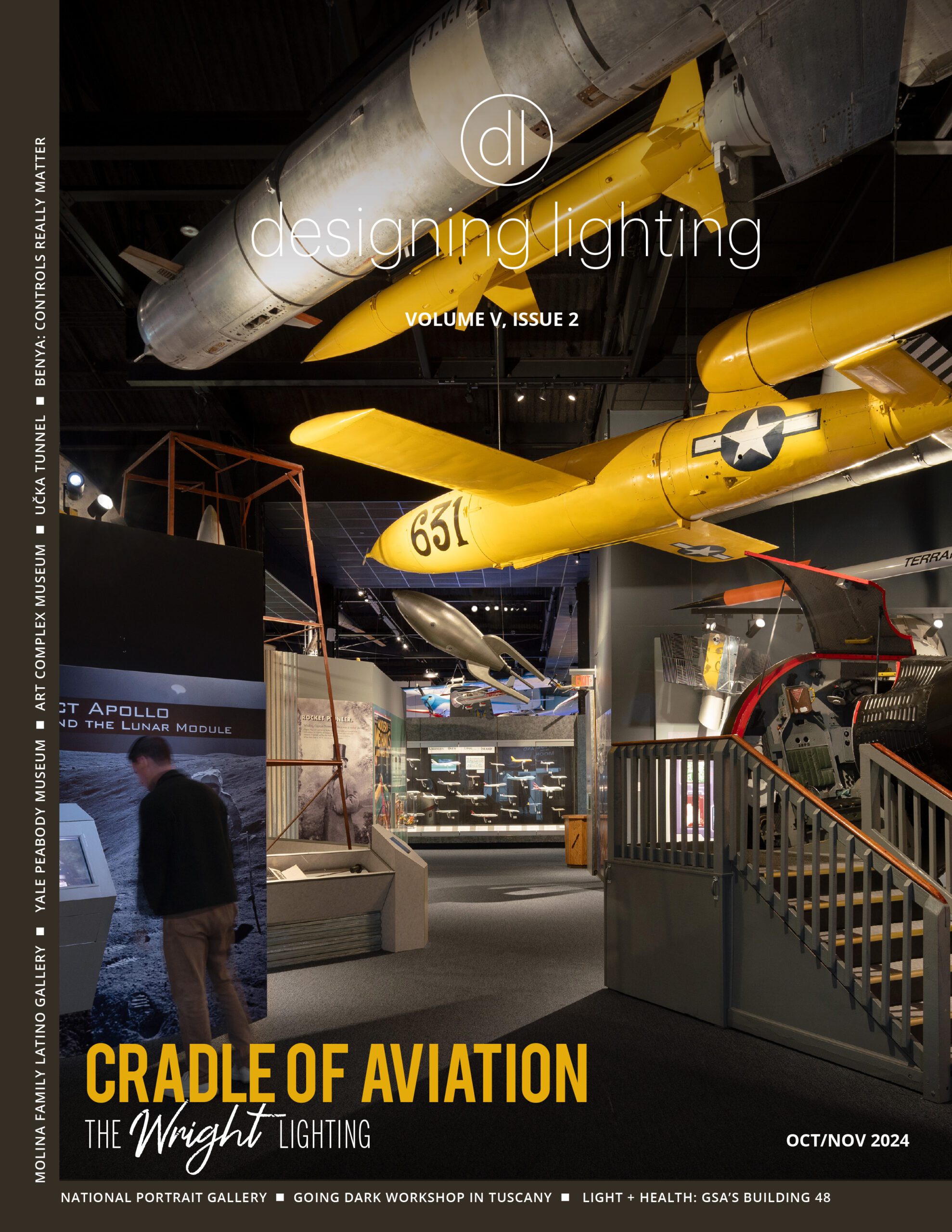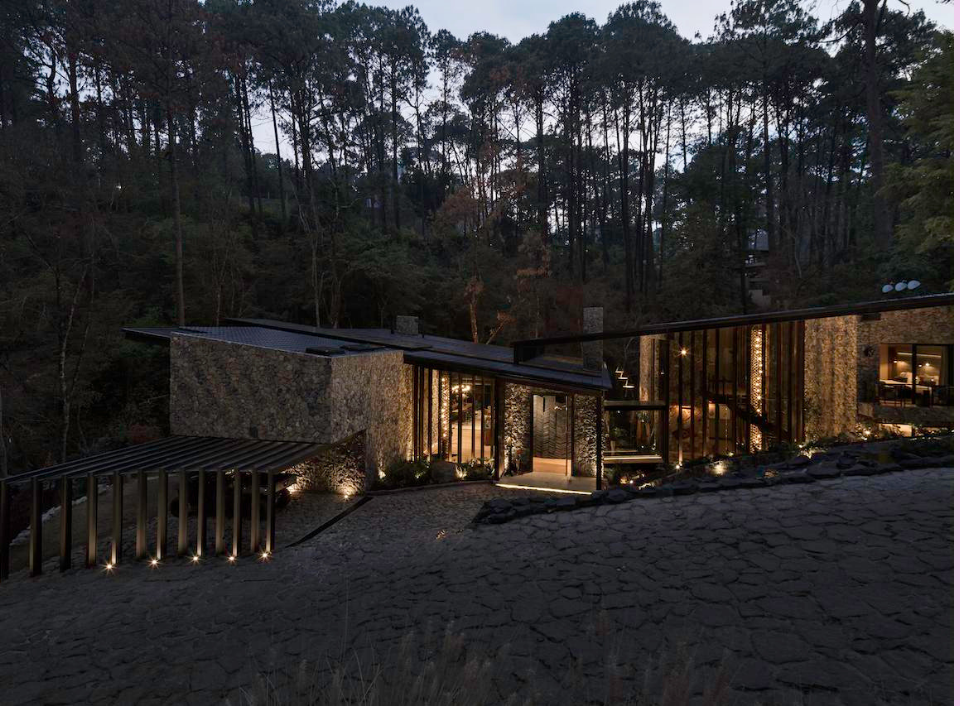The River House in Valle de Bravo, Mexico incorporates nature in a highly unique way — a river literally divides the two spaces.

A view of the exterior of River House at nighttime illustrates the pivotal role lighting plays in showcasing the vaulted ceilings and bathing the living areas in soft light. Photo credit: Hector Velasco Facio
The picturesque town of Valle de Bravo is not what international visitors envision when they think of Mexican terrain. Situated on Lake Avándaro, approximately 2.5 hours west of Mexico City, it boasts mountainous forests and a quaint city center of cobblestone streets and colonial buildings that date back to the 17th century. The location, which draws tourists who enjoy hiking and water sports, is known for its upscale residential community.
The architectural firm of Luciano Gerbilsky Arquitectos, headquartered in Mexico City, was presented with a unique situation for a 12,000-sq.ft. residence to be built in a wooded area of Valle de Bravo. It is composed of two spaces, one private and one open, divided by an artificial river (that connects to a natural one) at the main entrance and surrounds the entire house.
The house was built with steel framing, which allows for wide areas with large windows and double-height ceilings. Earth tone-colored stones on the façade and glazed tiles on the ceiling maintain the rustic ambiance, while a steel and glass bridge connects the two spaces and allows views of the natural surroundings as well as the architecture. The goal was to make the residence feel as if it were a part of the landscape.
Dubbed the River House project, the home also features an underground wine cellar with a capacity for 400 bottles that need to be kept at an ideal temperature. With such a grand space, proper lighting to show it off was a must. Next to the wine cellar is the underground high-tech multimedia room..

Just as the architects utilized the area below ground, there are several upper levels, with vaulted ceilings that meet at a central point. The top level has five private bedrooms, baths, and private family areas, each with its own balcony facing the river.
Great care went into lighting the outdoor columns on the front of the house. Each LED luminaire was precisely mounted to ensure the light travel up the beam with no spillage on the house.
The second level contains the larger, social areas such as the interior living and dining room, which are adjacent to an exterior living and dining area on an outdoor terrace. The pool is deliberately located in this area to visually make the transition between the house and the exterior landscape. Illuminating this central space are two custom chandeliers composed of interconnected horseshoes suspended from the vaulted ceiling and visible from the two levels; one measure 29.5 feet high, and the other is 19.5 feet high.

On the terrace is an exterior kitchen equipped with a stone oven, Viking grill, and Teppanyaki iron griddle facing a dining table with seating for 14, lounge areas, a pool, and a gas chimney. The interior kitchen is close to the breakfast room – which is surrounded by a steel and glass structure facing the garden, river, and surrounding forest – and the interior dining room. The interior living room is situated alongside the double-height main entrance with a wood fireplace that warms the whole house on chilly evenings.

On the lower level, there is a full spa with sauna, Hamman (Turkish bath) room and massage area. Adding to the spa feeling are interior gardens that intertwine among the open and closed spaces. Alongside the river sits a Jacuzzi tub next to a fire pit surrounded by comfy chairs wrapped in warm sheepskin. This exterior lounging area has a full bathroom conveniently located nearby.
Through Luciano Gerbilsky Arquitectos’ work, River House is the epitome of living comfortably in nature without sacrificing any conveniences of today’s modern, affluent lifestyles.
PROJECT SPECS
Project: River House Location: Valle de Bravo, Mexico Architects: Luciano Gerbilsky Arquitectos Photographers: Héctor Velazco Facio/José Margaleff
This article was originally featured in the October issue of designing lighting (dl).




